Psychedelic-inspired drug discovery using an engineered biosensor; Dong et al. 2021
Sunday Journal Club #7
Few things before we begin:
Friday Journal Club has been rescheduled for this glorious Sunday. Enjoy 🤟🏽
Follow me on Twitter @TyQuig and Instagram @thetab_psychedelicscience”
Reminder: Part of this newsletter is 24/7 office hours. If you have a question about psychedelic science, send it my way.
Introducing…
Psychedelic-inspired drug discovery using an engineered biosensor
Why they did it
Molecules that bind to serotonin 5HT2a receptors are promising treatments for neuropsychiatric disorders such as depression, PTSD, and substance abuse disorder. We’ll call these molecules 5HT2a ligands.
While some 5HT2a ligands make you trip (i.e. the classical psychedelics), evidence is mounting that tripping is not essential for their therapeutic benefit.
Eliminating the need for long therapy sessions to facilitate someone’s trip can make these treatments more affordable and accessible.
The enormous societal and monetary value of a highly effective, non-hallucinogenic mental health treatment has triggered a molecular gold rush. However, unlike gold, the valuable molecules don’t look to different than the rest, and it is difficult and expensive to test each one.
The authors of this study solved this problem by developing a sensor that makes serotonin 5HT2a receptors in mouse brains emit green light when a hallucinogenic molecule is bound. In this context, green is the new gold.
This sensor, combined with anti-depressant assays, will make it much easier to identify non-hallucinogenic, therapeutic 5HT2a ligands.
What they did & what they found
Receptors are big proteins made of long, folded and twisted chains of amino acids. These researchers switched out a region of the 5HT2a receptor protein chain with a protein chain that can emit green light. PsychLight is born.
The emission of green light is only activated when the receptor changes shape a certain way, like when a hallucinogenic molecule is bound to it.
How sensitive is the sensor to serotonin presence?
Quite. The researchers used a virus carrier to inject the genetic code (i.e. transduction) for psychLight into cultured mouse brain cells and into full mouse brains. When they injected some serotonin to the brain culture dishes, the cells with the receptors emitted light. Upon electrically stimulating serotonin release in slices of the whole brain, they observed the same result.
Does the sensor also work in living mice?
Yes. They transducted mice with psychLight in four different regions of the brain, and implanted fiber optic cables to detect light emission. They administered a shock to the mice’s feet and measured the resulting fluorescence patterns. These patterns were reliably detected across multiple trials.

Can the sensor detect exogenous (i.e. from outside the body) molecules?
Yes. They administered 5-MeO-DMT to psychLight mice, and observed fluorescence within 1 minute. When administered saline solution or a 5HT2a antagonist, fluorescence remained unchanged and decreased, respectively.
Can the sensor differentiate between hallucinogenic and non-hallucinogenic molecules?
Yes. The researchers applied structurally similar pairs of ergoline, tryptamine, and amphetamine molecules where one molecule is hallucinogenic and the other is not. The sensor lit up for the former molecules, but not the latter.
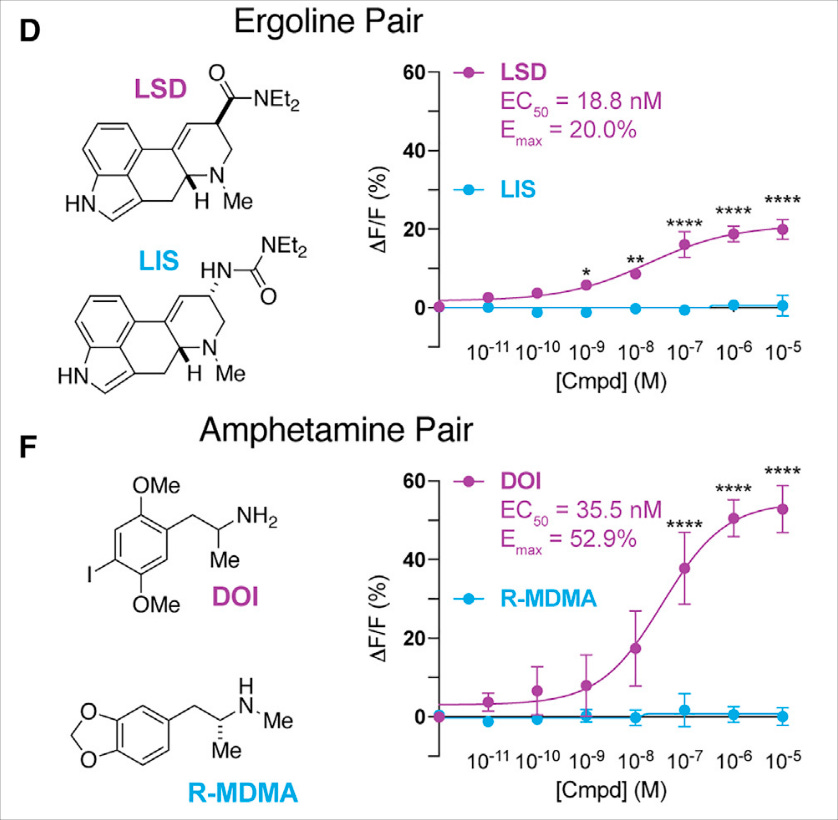
How quickly can we test a bunch of potentially hallucinogenic and/or therapeutic 5HT2a ligands?
Medium quickness. The researchers expressed the psychLight protein in cultured cells. They administered a suite of different 5HT-related molecules and found that the sensor is highly sensitive to subtly different chemical structures. For example, adding methyl groups to the nitrogen decreases the sensor’s response.
By running molecules through a series of tests, they were able to assign each molecule a ‘ligand score’. Molecules with high scores are hallucinogenic 5HT2a ligands. Molecules with low scores are non-hallucinogenic 5HT2a ligands. Molecules with scores close to zero are not ligands for the 5HT2a receptor.
Can the psychLight ligand score predict the hallucinogenic and therapeutic properties of molecules?
Yep. They acquired a ligand score for 34 molecules of unknown hallucinogenic and therapeutic properties. One molecule, AAZ-A-154 showed an optimal ligand score for non-hallucinogenicity. They tested this molecule using the head-twitch response assay, and found that it did not cause head twitches (less head twitch = less hallucinogenic).
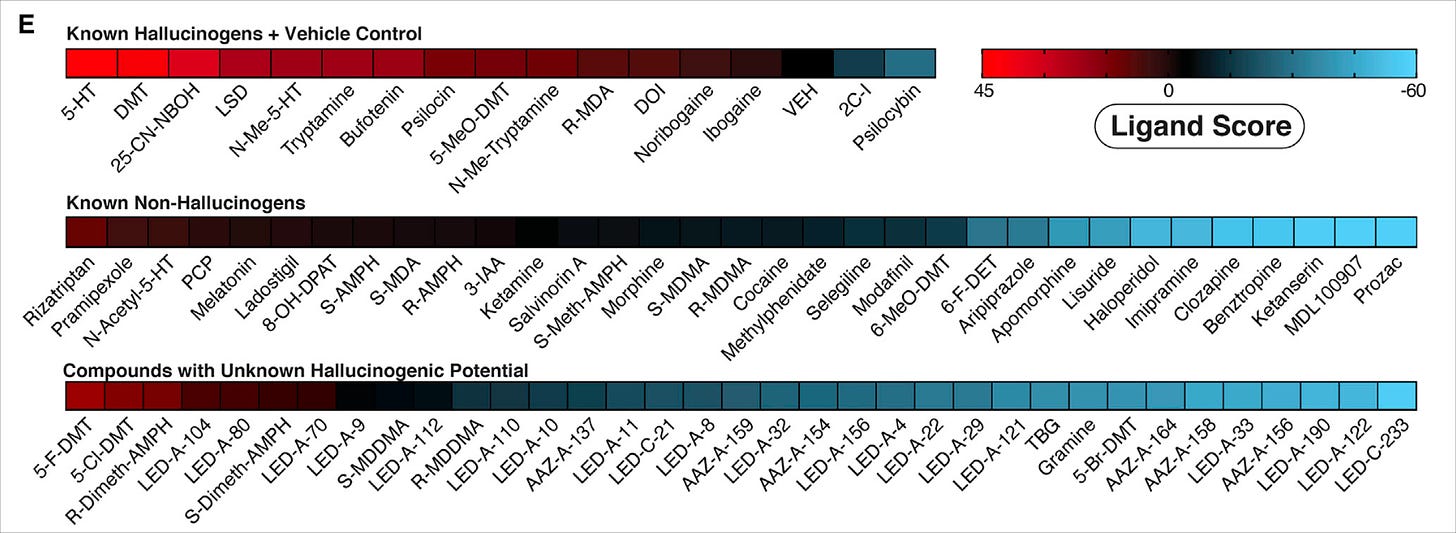
What is the therapeutic potential of AAZ-A-154?
It has psychoplastogenic and anti-depressant qualities. They exposed cultured neurons to AAZ-A-154, which grew in dendritic complexity. Mice that received AAZ-A-154 were more mobile during a forced swim test, a standard anti-depressant effect. Mice bred to express depression-like symptoms, including decreased excitement about sugar, were given AAZ-A-154. The depressed mice became just as excited about sugar as wild-type mice. Pretty sweet if you ask me.
My Take
I promise I am not biased toward the Olson lab, they are just involved in some really cool research right now. They are part of this research team, led by the Tian Lab, which basically invented a molecular metal detector for brain medicines, and then demonstrated how well it works. It is worth reading their discussion section, where they talk about all of the useful and important applications of this technology.
A few weeks ago our Friday Journal club was about the psychoplastogen tabernanthalog (TBG), which is structurally similar to ibogaine. TBG has a similar ligand score to AAZ-A-154, which strengthens the utility of this score for predicting the therapeutic potential of molecules. I think it’s plausible to think that the people who know how to use psychLight, namely the Olson and Tian labs involved in the study, as well as Dave Olson’s company Delix Therapeutics, have the strongest pickaxe for digging out the golden molecules in this darn tootin’ psychedelic mental health gold rush.
I appreciate your feedback on how I did breaking down this science. Let me know in the comments:
Think more people should know about psychedelic science? Share my newsletter with your people, because your people are my people ✌🏽.
📃 Here’s the paper:
Dong, C. et al. Psychedelic-Inspired Drug Discovery Using an Engineered Biosensor. Cell184, 1–14 (2020).
From around the psychosphere
🔊 Heard of the Ayahuasca Murders? Listen to The Last Podcast on the Left’s irreverent discussion of this ridiculous, stupid, and sad story of this interaction between new age profit- and attention-seeking wokeism and indigenous traditions:
💫 The Most Influential People in Psychedelics with the right take from Psilocybin Alpha:


And me:


😂 Have to share the psychedelic takes on the xkcd academic paper memes:

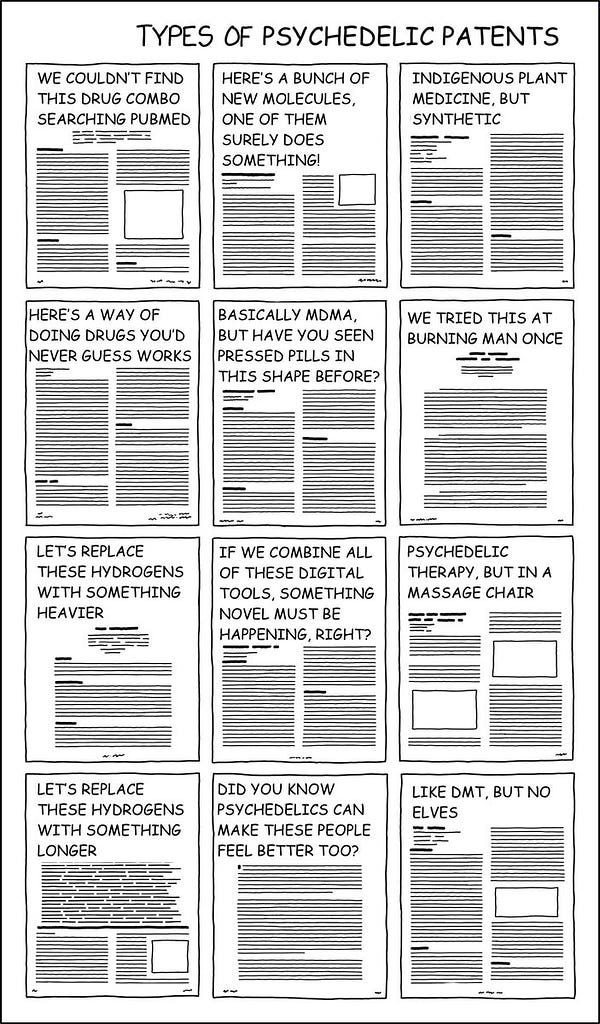

🤙🏽 Aaaaand finally, here’s some Uncle Iroh Lofi to soundtrack your Sunday mellow:
🤟🏽 Have a swell week friends 👽





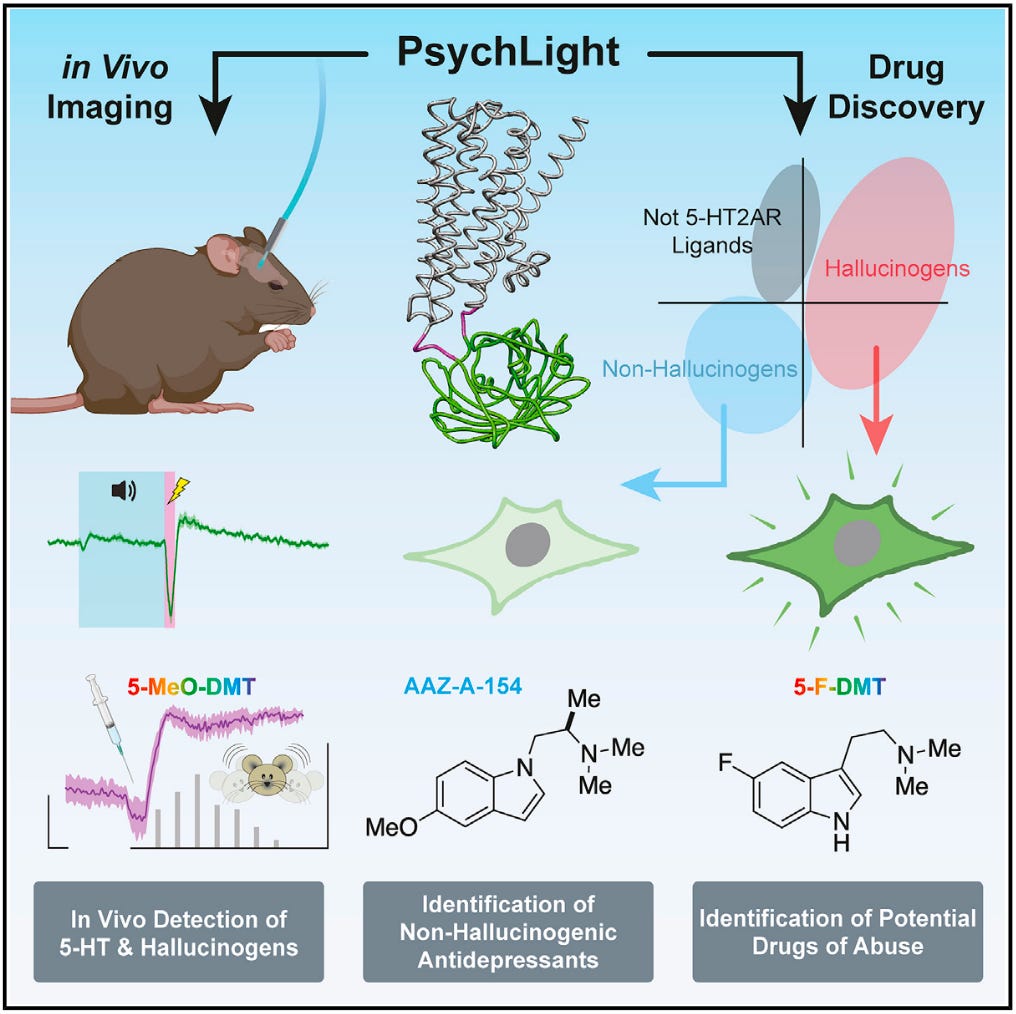
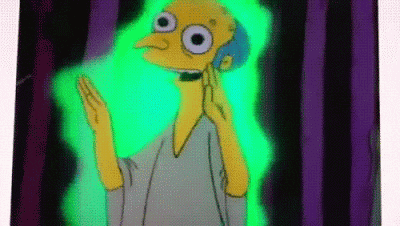





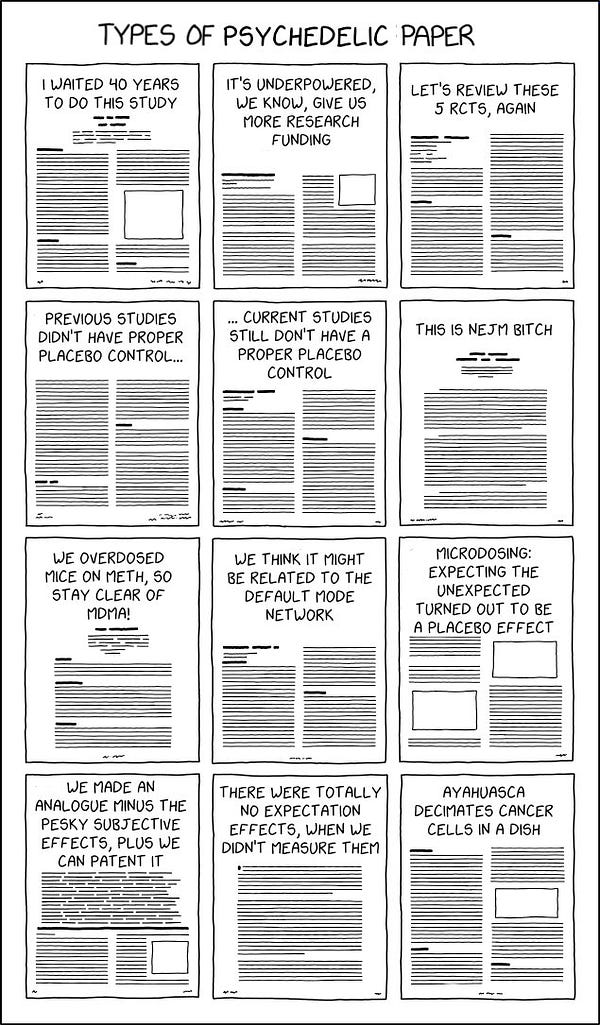
Awesome breakdown as always! Still have to dive into the paper but sure seems like an awesome lightSaber uhh psychLight